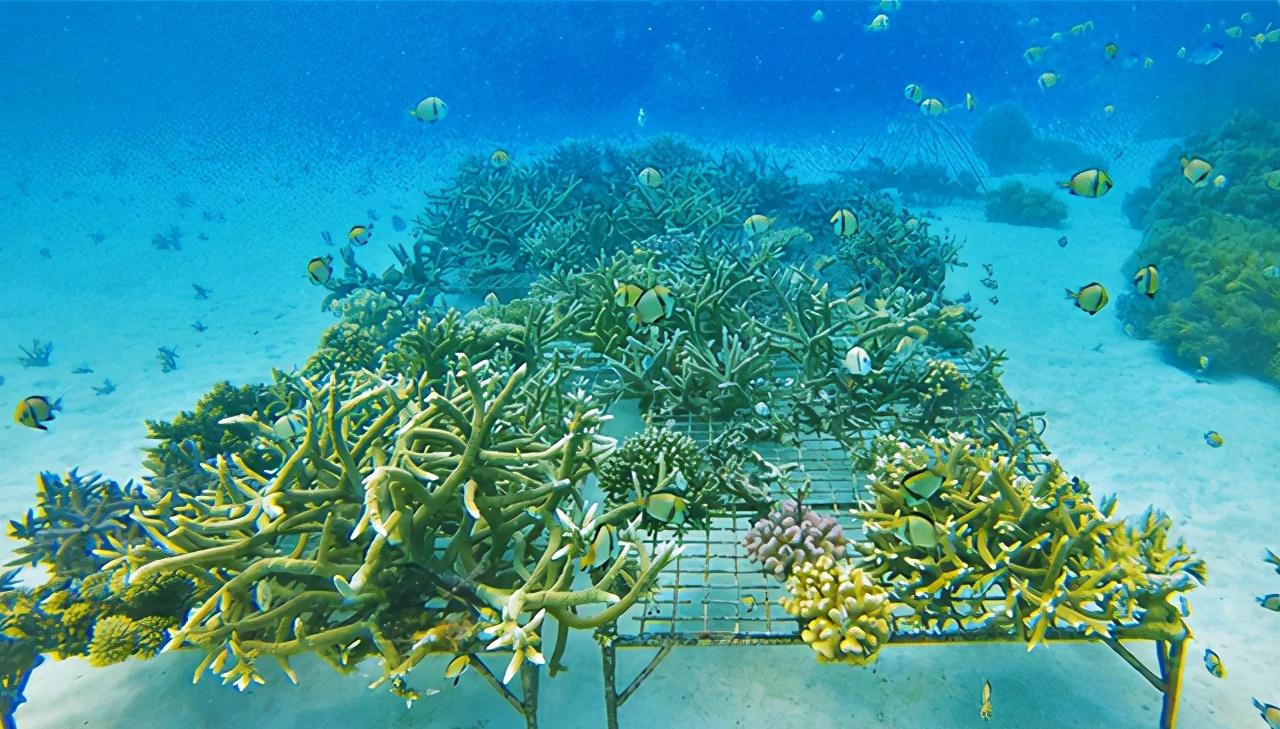
Gardening for corals in Bailey's garden
When people think of gardening in Vanuatu, images of people tending to taro, yams and other edible food crops, or of people working on kava farms. Visit some of vanuatu's islands and you'll discover a very different way of gardening: coral gardening.
Coral horticulture is not about producing crops for consumption or marketing, but about the community reaching out to coral reefs at risk. Through this activity, community gardeners can gain knowledge of corals and reefs, which will contribute to more effective management of the marine environment. This activity also promotes food security through ecological restoration and can be developed as part of ecotourism initiatives.
Since 2015, the local nonprofit, Island Reach, has been working with communities across Vanuatu and the Vanuatai Resource Monitoring Agency to develop and expand coral horticulture projects. These projects use basic scientific knowledge to complement the local ecological knowledge and customary practices of Vanuatu reef users and managers. In 2017, the Island River Section invited Dr. Austin Bowden Kebby, who protects corals, to Vanuatu to share his expertise and different techniques in coral horticulture. Dr. Bowden Kebby pioneered the cultivation of antler corals on Pacific islands in the mid-1980s, and his approach was simple, affordable, and easy to replicate across communities. This became a major feature of Dr. Bowden Kebby's approach. While the event is based on the best scientific knowledge available, just a few simple lessons are available to almost all interested communities, and it only takes a roll of three-strand rope, some cement nails, and a bag of cement to get started. Our goal is not to replant entire reefs, which would be an impossible feat; rather, the process involves several different and straightforward coral cultivation methods that can encourage the natural recovery of damaged reefs, create habitats for fish and other marine life, and hopefully nurture corals that can survive future challenges.
It is so important for gardeners to help corals grow
Coral reefs are often referred to as "marine rainforests" because they are home to about a quarter of the planet's marine species, although they only cover 1% of the world's ocean floor. In addition to their rich biodiversity, coral reefs offer many benefits to people, from shoreline protection to food security. For example, a square kilometre of coral reefs has the potential to produce about 15 tonnes of fish and other seafood per year. In fact, an estimated 1 billion people rely on coral reefs as a source of protein. In Vanuatu, people are well aware of how coral reefs sustain them on a daily basis, providing food, protection, livelihood and cultural value. Because of this familiarity, almost anyone with long-term exposure to coral reefs can describe a variation: a fisherman might tell you how their catch has decreased in their lifetime, or a grandmother might tell you about a fish she made when she was little that she would never see again.
Vanuatu's coral reefs are subject to many external influences
Climate change has brought impacts on coral reefs, such as rising ocean temperatures and more severe hurricanes. Outbreaks of coral-feeding spinosaurus appear to be more frequent and more destructive. Growing populations and markets can fuel unsustainable fishing practices and further debalance ecosystems.
Evidence from around the world suggests that active conservation action can make a difference, and some locally managed MPAs have achieved positive results. Coral horticulture is a valuable complement to local efforts to sustainably manage coral reef ecosystems.
Coral reefs are planted directly on the seabed
There are two main types of corals that make up the reef system: stony corals (hard corals) and soft corals. Hard corals are skeletal rocks that are responsible for building coral reef structures to lay down. These corals are further divided into several different species, which anyone can easily identify by their general shape, such as branching corals and bulk or boulder-shaped corals. Many people are surprised to learn that coral is actually an animal that feeds on zooxanthellae, reproduces, and even participates in battles. A coral animal is called a polyp, and all the polyps live together to form a group.
One of the unique things about corals is their ability to reproduce in different ways. One way is to let one polyp sprout to form the same polyp, which together form a group. In addition, corals can be multiplied by fragments. Just like propagating yams by cutting mature tubers, coral gardeners can grow coral fragments in nurseries, forming the basis of a new group.
This crushing property was used to create a coral nursery using three strands of rope, where the gardener took a small cut of branch coral and fixed it to the rope twisted open strands. Rope breeding is very beneficial to staghorn corals, which are an important reef-building species. They grow fast, and their long, pointed branches intersect with each other as they grow upwards. This creates a three-dimensional space, a perfect habitat for juvenile fish.
Rope planting coral reefs
(Courtesy of Janis Steele, co-director of the Island River Section of a grassroots environmental charity organization and a Bachelor of Science in Human Ecology and a PhD in Cultural Anthropology, this project reflects her passion for the connection and interdependence between people and the natural environment.)
Source: Vanuatu Travelogue public number
For more information | Immigration | The property | Tourist | And more please pay attention to: Vanuatu Travelogue public number